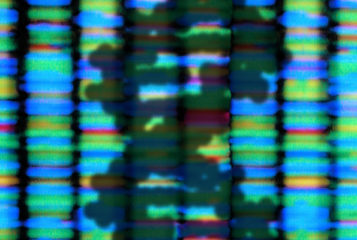An experimental gene therapy successfully treated 96 percent of children born with no immune system.
ADA-SCID (severe combined immunodeficiency due to adenosine deaminase (ADA) deficiency) is a rare disease that leaves children with no functional immune system. It is caused by the lack of a functional copy of the ADA gene.
'If approved in the future, this treatment could be standard for ADA-SCID, and potentially many other genetic conditions', said co-lead author Dr Claire Booth, from Great Ormond Street Hospital for Children (GOSH) in London.
In three UK and US clinical trials, researchers at GOSH and the University of California, Los Angeles, collected haematopoietic (blood and immune cell-forming) stem cells from the patient's bone marrow or blood, and used a non-harmful virus to deliver a functional copy of the ADA gene into the cells' genome.
These cells were then returned to the patients where they re-integrated into the bone marrow. ADA expression increased dramatically within three months and was sustained at healthy levels. Elevated immunoglobin production was also observed, indicative of a normal immune system, and severe infection rates were considered low after the initial three-month transition period.
After a follow-up period of two to three years, all the children had survived, and 48 out of 50 exhibited no signs of the disease and could discontinue previous treatments.
ADA-SCID affects up to one in 200,000 newborns worldwide and can often be fatal within the first two years of life. Treatment options are limited to a stem cell transplant (if a suitable donor is available) which is risky in itself, or life-long injections of the ADA enzyme and immunoglobin-replacement therapy to provide antibodies. Potential exposure to infections severely restricts human contact and social interaction.
'I wasn't allowed to kiss my daughter or sleep next to her. Everything had to be highly sterilised to keep her safe.' said the mother of a four-year-old who was part of the trial. 'Six months after she was given the gene therapy her skin was clean and healthy and the other symptoms got a lot better. She's doing so well now and can do everything a normal child her age would do.'
The study was published in The New England Journal of Medicine.
Sources and References
-
Autologous Ex Vivo Lentiviral Gene Therapy for Adenosine Deaminase Deficiency
-
Gene therapy restores immune function in children with rare immunodeficiency
-
Gene therapy offers potential cure to children born without an immune system
-
Experimental gene therapy points to cure for rare immune disease
-
Gene therapy successfully treats rare immunodeficiency in paediatric patients
-
Gene therapy offers a potential cure to children born without an immune system




Leave a Reply
You must be logged in to post a comment.